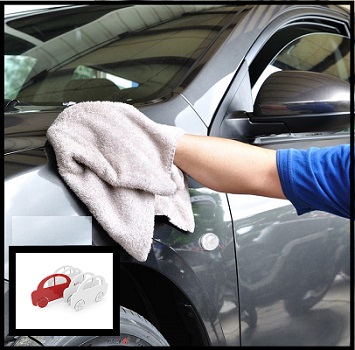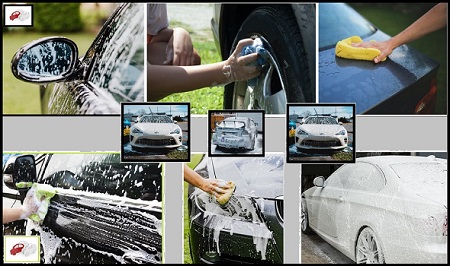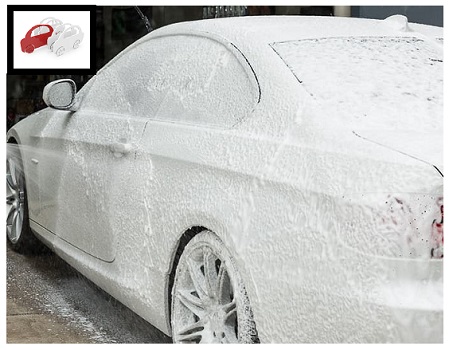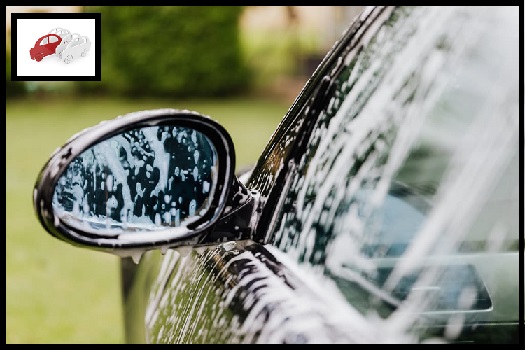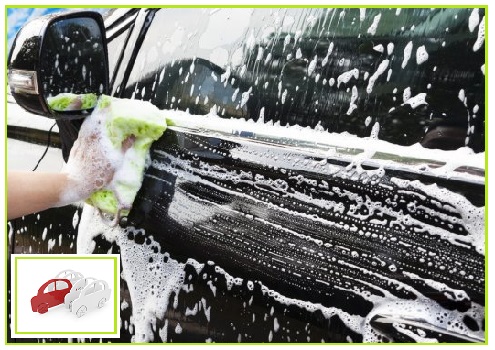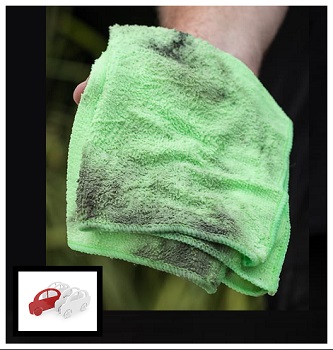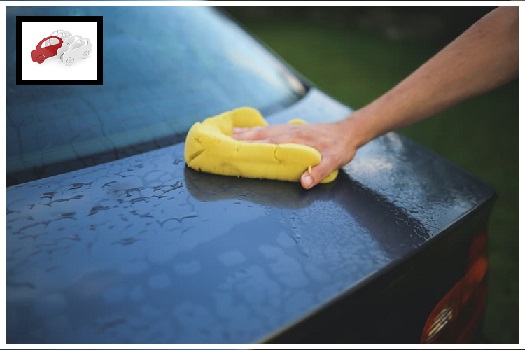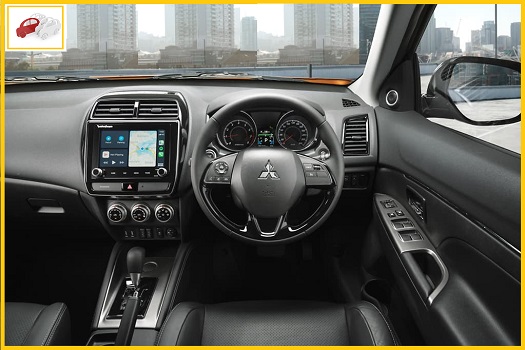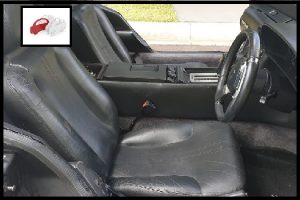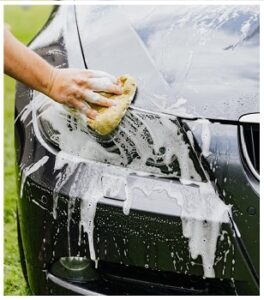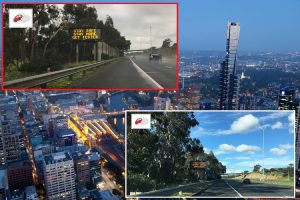DABAS blog – The ten secrets to successful car-cleaning.
Hello readers: hoping all is going well as we approach summer 2020. During our most recent Stage 4 Melbourne C19 restrictions our vehicles were mostly sitting parked idle and not clocking up the regular commuting and/or social travel kilometres usually driven a year ago. Now Melbourne’s coronavirus lockdown restrictions are slowly easing – pending your postcode – and we can venture further distances from our home in progressive stages (even hopefully, allowed to travel on a local regional holiday by Xmas). But, before we start using our cars – aka the new social-distancing bubble – as if it were February 2020, now could be a good time to give your vehicle a safety check plus some extra TLC after its enforced hibernation. Before your vehicle resumes longer trips, including more regular daily usage, some things to look at (by clicking on the link/s) could be your vehicles tyres, is your vehicles service regime up to date , refresh yourself with tips on towing safely , vehicles to tow and road trip travelling tips. After reflection, you might even want to consider if it is time to update your car, and whether you will be trading in your car. You may even find some other useful information to assist getting back on the road driving regularly by having a look at DABAS’s past blog index page. One thing for sure though – after your vehicle’s been sitting around gathering dust a while, it is probably going to need a good wash, maybe even a wax or polish before poking its bonnet out your driveway into our upcoming Melbourne summer sunshine. So, before your car and Melbourne get back to business and the new Covid19 normal, let us step back and look at some tips on how to wash, wax and polish a car.
Here we go, if you presently have the time and the space at your place, washing, waxing, or polishing your car at home can produce great results. You do not necessarily need to go overboard. Washing and waxing the car at home can be convenient and affordable, with the bonus that your vehicle should come up sparkling at least as well as it would after a visit to one of those commercial car washes. If you are anything like me, your car is one of your most prized possessions. It stands to reason then, that you should want to keep it looking good. Some do say that a clean car says a lot about its owner – and it is also a great way of protecting your pride and joy’s value. There are also many car owners who like driving a car that has had noticeable care and attention lavished on it, with the added bonus that come trade-in or private-resale time, a well-presented car can ask thousands of dollars more than a faded, clear-coat peeling tired-looking dirty ‘well-used’ one. A good clean every week or two if possible is highly recommended. Road muck, urban pollution, sparks from overhead tram/electricity wires, tree sap, bugs and bird bombs are just some of the common spoilers of automotive paintwork, chrome, and plastics. We strongly advise to only use car-specific cleaning products; never use dishwashing detergents to wash your car. They can ruin your car’s paintwork, eating away at your car’s protective clear coat, not to mention the paint underneath.
1) Where should you wash your car? A flat, shady place to park with enough room to open the doors, it is ideal to having a good working space in which to clean your car. Wash your vehicle on grass if possible. That way the lawn gets a good watering, and it stops soaps and detergents from going down the drains and entering our waterways
2) What will you need to wash and clean your car? A hose with a variable nozzle, two buckets (more on this shortly), a good-quality car wash detergent, a handful of microfibre cloths, an auto towel/chamois (for drying), and a wheel brush – or a separate microfibre cloth – for your wheels and tyres are also highly recommended, if not vital. You will also need a vacuum cleaner, rubber gloves and a rubber brush and/or soft-bristle nail brush. Microfibre rags, paper towel, window cleaner and electrostatic cloths are also a great idea. A car-wheel-specific cleaning product is optional, depending on how dirty your wheels are.
To Start
3) Wheels – Wash your wheels first to avoid any harsh cleaners or brake dust being later transferred to your nice clean car. For the same reason, always use a separate microfibre cloth or wheel brush to the one you will use to wash the rest of your car. Most well-kept wheels will not require anything more than soapy water to sparkle and shine. But if you’ve missed a few washes, or the wheels are black with brake dust, you may wish to use a car-wheel-specific spray-on wheel cleaner, being sure to follow the instructions on the bottle (as many may contain acids that can attack the surface of your wheel if misapplied).
-Wet the wheels first and use a soft brush to agitate your soapy water or wheel cleaner over every spoke and surface. Get in around the wheel nuts and give the outside tyre walls a good scrub, too. – Wash one wheel at a time and follow by rinsing all the detergent off thoroughly. – Once the wheels are all clean, you can move on to washing your car.
4) Washing the exterior: Before you start washing your car, it is important to think about the end result. Getting out the hose-reel on a bright, sunny day may seem like a great idea, but in truth it is always best to wash your car in the shade or when it’s overcast to help prevent water and detergent spots from forming on the paintwork. Also, to make sure you are not scratching any grime back into your paint, start by giving the car a thorough hose-down. Once that’s done, you can use a foaming pre-soak treatment (or some car-duco-specific detergent and water mixed in an atomiser) to lift any muck from the paint – being mindful to let it soak in for a couple of minutes before rinsing it away with a high-pressure hose.
5) Now it is time to bring out the microfibre cloths and buckets. Yes, buckets plural. Fill one bucket with fresh water and the other with good-quality car-specific wash suds. Start washing your car from the roof down, cleaning and rinsing one panel or section at a time, as well as the door jambs, sills and scuff plates – and do not forget inside the boot or hatch jambs.
Press gently. You are trying to remove the dirt, not pound it into your paintwork, risking potential scratching or etching. – Remember to rinse your microfibre cloth in the bucket of fresh water before going back for more suds, as this will ensure all that grit and grime you’ve just removed from your car ends up at the bottom of a bucket, and not rubbed back in to your paint. And consider emptying and refilling the rinse bucket with clean water; do not try to make one bucket last the entire car wash.
If the cloth looks dirty, set it aside and grab another one. This will also avoid rubbing grit back into your paint.
6) Time to dry: Dry the car when you are finished the washing process with a chamois or pure cotton/car-drying-specific auto towel in wide, sweeping motions. Drying your car is an important step of the cleaning process. Removing any standing water from the paintwork and wheels not only helps leave the car looking more presentable, it also eliminates water stains that, over time, can potentially have a mild corrosive effect on the clear coat.
-Starting at the top, use a good-quality auto towel/chamois to sweep the water away from the painted panels and glass. Squeeze your drying cloth regularly to make sure you are not reintroducing water to parts of the car you have already cleaned and consider rinsing the auto towel regularly in a bucket of fresh water to prevent light scratching.
-Once you have dried the painted panels and glass, re-open the bonnet, boot and doors and dry the edges of the panels and the door jambs. This attention to detail will pay rewards come resale time and stop hidden dirt and grime from making its way on to your clothes next time you hop in the car!
-With the body work done, use a separate soft cloth to dry your wheels and tyres. Although the wheels might be clean, fine grit that may be lurking in hidden spots can contaminate pliable fabrics – and you do not want to rub this back into your paint the next time you clean the car/vehicle. Different coloured cloths for different parts of the car is a great way of avoiding this kind of cross-contamination.
–Noting that If you are considering adding a protectant like wax or tyre shine to your finished work, do it now before you move on to the interior.
7) Cleaning the interior: Like cleaning your home, cleaning your car is a process that is best done in sequence. Your car – like your home – can also be one of the places you spend the most time in – and no one really wants to sit in a dirty car.
–Start by taking any rubbish from the car, and by setting aside any personal possessions and loose items – this includes your floor mats. This will give you a better idea of what needs doing and allow you to get in and under all those nooks and crannies that can harbour dust and mystery sticky goop.
–Next, it is time to grab an electrostatic cloth and wipe over all the cabin’s hard surfaces. The electrostatic cloth is a great tool for lifting away loose dust and particles and will reach into areas such as vents and panel gaps to ensure a thorough clean. If you do not have these, a lightly dampened soft cloth works nearly as well.
-If you have leather seats, the electrostatic cloth can also help get crumbs and dust from between the seams. If you have cloth trim, use a rubber glove to loosen any lint or hair trapped in the fabric before firing up the vacuum cleaner. You can use the same method on your floor mats, or employ a soft rubber brush, like one used to brush your pets, or even masking tape.
-Now get the vacuum cleaner to work using a small, brushed head to thoroughly lift the fibres of your fabric and carpet. You will be surprised at how much material the vacuum cleaner picks up once you have taken the time to first loosen that pressed-in dirt and goop. For heavier stains, consider a little shampoo and warm water on a dampened microfiber cloth. If you are as fussy as DABAS is, you can also use a nail brush and soapy water to clean your pedals. Just be sure to place an old towel or some rags on your carpet first, and remember to dry them with a clean, soft rag immediately afterwards.
8) Seeing is believing – clean glass and mirrors are vital to your safety. Being able to clearly see where you are going is a crucial part of safe driving. Furthermore, clean glass will also allow your wipers and demister to work more effectively, further improving your visibility and safety the next time it rains. Which it surely will, given Melbourne’s four seasons in one day weather.
-The important thing to remember is that standard and tinted glass should be cleaned in different ways. Where glass cleaners and a paper towel will work well on untinted glass (like your windscreen), very mild soapy water – rinsed with fresh water and a soft cloth – is better used on tinted glass so as to avoid any damage to the tinting film.
-Like any spray or cleaner, always apply the window cleaner to your paper towel or cloth first, as spraying the product directly to the glass can lead to over-spray on other materials. Be sure to keep the cloth damp – but not wet – and work it into the very edges of each window. Be careful not to bump electrical connectors, such as the ones for your demister, and to reset your rear-view mirror if you happen to knock it out of place.
Repeat the process two or three times per pane – inside and out – until you are satisfied with the result.
DABAS recommends that you use the same method to clean your mirrors. Do not forget the wing mirrors, rear-view mirror, and vanity mirrors, and if you have one, give the reversing camera’s lens a wipe too. Once you are done, use the same damp cloth to wipe your front and rear wiper blades, and remember to top-up your window washer reservoir.
9) The detail: Moving beyond the basic clean outlined above is commonly referred to as ‘detailing’ your car. This can include the application of protectants and waxes, tyre shine, and an under-bonnet scrub. We will cover these steps in a moment. But for now, the results of a proper wash should impress even the fussiest driver. Remember to secure your floor mats back in place and return your personal items before packing the hose away. Car cleaning time is also a great opportunity to check your car’s vital fluids and tyre pressures (including the spare) – and don’t forget to have a look at your engine, wheels and tyres for anything out of the ordinary you may wish to report to your mechanic.
10) Do you need a quarterly waxing routine?: If you are a regular daily driver who covers around 15,000km a year, your car can use all the help it can get in our tough climate. In that case, your car will benefit from an application of wax every three to four months. Cars that are garaged every night, or are used sparingly during the day, or only travelling short distances in the suburbs can usually go longer before needing a wax. Depending on the usage and conditions scenario, six to 12 months might be fine for a car that is otherwise mostly sitting in the garage.
How can you tell if your vehicle needs a wax? After a wash and dry, lightly run the palm of your hand and fingers over the bonnet and roof. If the paint does not feel as smooth as glass, it needs waxing. #Noting that a newly painted car should be given time to properly cure so wait one or two months before using wax or polymer sealants. As with the previously mentioned rules of only using dedicated safe for automotive paintwork detergents, make sure you use automotive wax or polish that has been formulated specifically for automotive finishes. The silver polish used to brighten up your pony club or swimming trophies and candlesticks just will not do. And unless you are driving something from the pre-1920s era of motoring, brass polish is to be avoided also.
How to wax or polish a vehicle. Divide the car into five manageable sections: roof, left-side, right-side, front and back, since wax that dries on the car’s surface is extremely hard to remove. Polish and wax your vehicle in a cool shaded area out of the sun, making sure neither the car nor the sun’s rays are too hot, as these conditions could result in stubborn-to-remove wax or unsightly streaks and splotches. Then – Add a small, light coat of wax or polish on a car-duco-specific sponge applicator; as most other types of applicators, including cheesecloth (or that kitchen tea towel in your back pocket from your last BBQ) may potentially leave fine scratches on your vehicle’s paintwork.
– Apply wax or polish to the car’s painted surface in a small, even and circular motion, until the area is fully covered.
– After a few minutes, use another clean microfibre polishing cloth to wipe away wax or polish residue in the same motion as it was applied.
– Always apply and wipe in the same direction for consistency’s sake.
– Use only car-cleaning products including waxes and polishes that are marked clear-coat safe or specific to your car’s duco. *A word of warning too: the days of ‘cut and polishing’ are over. Due to the advances in automotive paint/ painting/refinishing/technology, most cars less than 25 years old should not need to be subjected to cutting and polishing. There are soft burnishing compounds available to remove light scratches and haze, but a strong cutting compound could cut away the shiny clear coat and leave a blotched patchy matt finish in need of an expensive respray.
Summary.
When cleaning your pride and joy, make sure you:
Rinse the car down, allowing the water to soak for a few minutes
Clean the tyres with a soft soapy dedicated brush
Use a dedicated wheel cleaner
Spare the soap for less rinsing, less mess, and less waste
Fill the bucket with lukewarm, not scalding hot water, as it may burn the paintwork.
Cleaning solutions, where to get them and how to use them
Only use and choose detergent products and other cleaning agents specially formulated for cars
Purchase these items from after-market accessory stores, service stations and supermarkets
Apply in strict accordance with the instructions on the container
Avoid application in strong sunlight and hot weather; wait for an overcast day
Be kind to the environment when disposing of waste products
And whatever you do,
Avoid/do not use powder cleaners that do not dissolve fully, and could scratch the paint surface
Avoid pressing down too hard, as it may scratch or dissolve the paintwork
Do not use household cleaners and detergents
Avoid/do not use high-powered car wash spray hoses held directly on your paintwork and chrome/rubber trim
Avoid automatic car washes, which will transfer muck from an earlier car to yours.
And do not forget that old proverb – Prevention is better than cure
Do not park your vehicle under trees or tram/power lines where birds might land and leave droppings.
(power/tram line sparks/splatter may also burn your paint)
Stay clear of cement, quarry, and cattle trucks on the road
Avoid driving your vehicle on newly sealed or gravel roads
Refrain from eating and drinking in your vehicle (excluding maybe? bottled water)
Clean any loose sand or dirt from your shoes before hopping in your vehicle.
Remove off the vehicle’s surface any heavy staining, such as insects, tar, and bird poo ASAP.
Keep your vehicles windows up and set your AC system to recirculate when travelling in dusty areas.
So, when the time comes to update to your perfect 2020-2021 social-distancing bubble – a new car – to drive on that road map’s roads in the new post-lockdown Melbourne, DABAS knows that buying a car to suit your needs can be one of the biggest purchases in your life. DABAS offers flexible personal assistance to clients on their car-buying journeys tailored to suit their individual budgetary needs. DABAS services can be delivered in a vast variety of ways, including – but not limited to – phone consultation/s, Zoom meetings, research emails, research links, LMCT yard email link referrals, face-to-face meetings at a car-yard/s, in the cafe at an LMCT car-yard or at the café of a leading Melbourne automotive auction house; even in your home if required. The choice is totally yours pending personal needs and the urgency timelines of being behind the wheel of your next car.
DABAS services are offered flexibly, as stages in a journey. You pick what stage of your journey you may need DABAS’s assistance: maybe the full journey, or just vehicle selection/clarification, or just providing a car-yard buffer zone and help with the yard process. We hope this intended to be “general-in-nature reading and information” page has provided some light-hearted C19 lockdown relief, here in Melbourne AU. By clicking on DABAS’s blog index link here you may find some helpful assistance for you in deciding the path of your car-buying journey. By clicking on the included highlighted links It may even shine some light on other information that assists you in selecting a suitable vehicle for your personal car-buying needs by providing some useful “very general-in-nature” information on your vehicle selection journey. Please note any examples, options, pricing and information mentioned in our blog pages are to be considered as a very general-in-nature summary; all specifications and information in all DABAS pages will be confirmed at the time of you updating into your next vehicle, along with your chosen vehicle’s sales representative in their LMCT showroom at the time you transition to your selected stages with DABAS.
Whatever roads your life journey takes you on, DABAS can help you find a car to travel those roads.
Have a great day, Cheers, Tim.
Please note: information mentioned on this page is to be considered as a general-in-nature summary, as clients have individually tailored needs for their DABAS automotive buying journey, information mentioned on all these pages should be considered as a basic guide and general summary. Information on this page can be discussed and clarified – if needed – upon your transition to becoming a client of DABAS.


